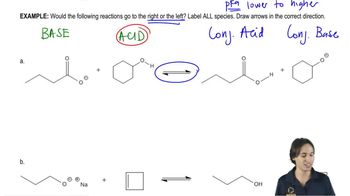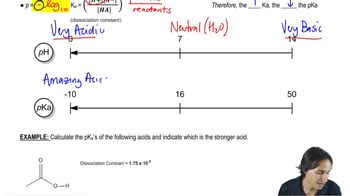For each of the following compounds (here shown in their acidic forms), write the form that predominates in a solution with a pH = 5.5:
g. HNO2 (pKa = 3.4)
h. HNO3 (pKa = −1.3)
 Verified step by step guidance
Verified step by step guidance Verified video answer for a similar problem:
Verified video answer for a similar problem:



 1:46m
1:46mMaster Why we use pKa instead of pH. with a bite sized video explanation from Johnny
Start learning